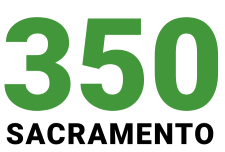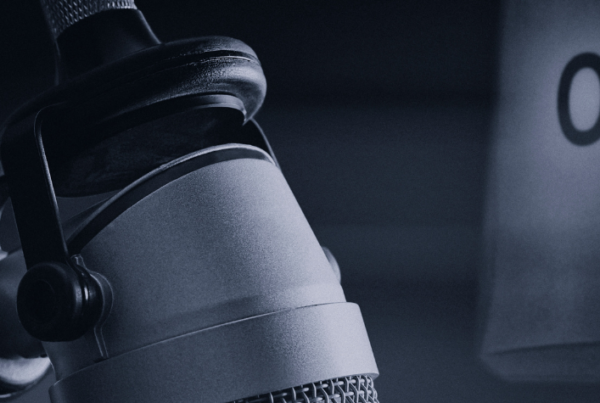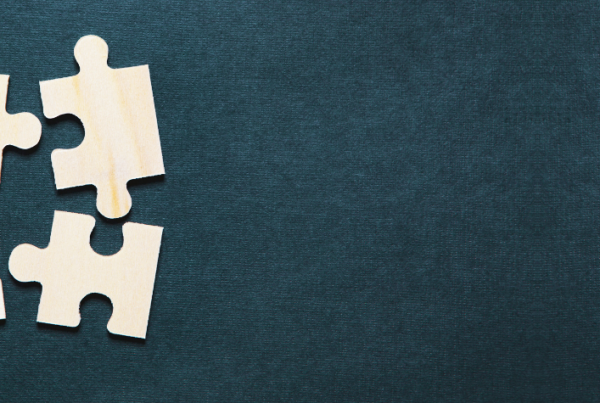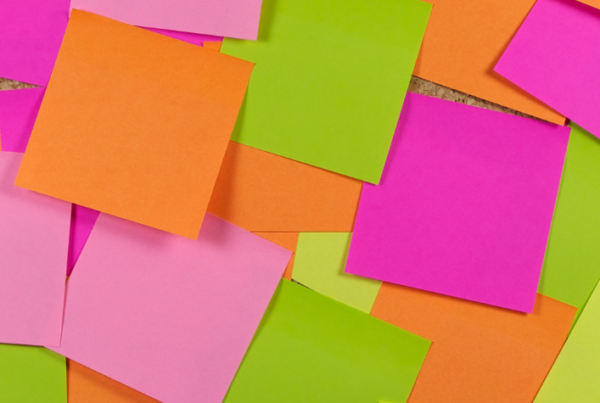Written by Kristi P. and Laurie L.
I previously wrote about my intentions for 2022. I’ve been thinking about how to create space & time to move toward my intention of Courageous Power in activism. I want to maximize the activities that support my intention and minimize those that detract from it. If I’m not conscious about how I spend time, I can get complacent or distracted. I’m just as vulnerable as the next person to jump from one great Netflix series to the next, spending precious hours of my life watching things I can’t even remember at year’s end. I want to live life fully, requiring me to carefully prioritize what’s most important. My method of self-reflection may be different from others’, but I share this in the hopes of helping anyone who needs it. Here’s some of the work I’m doing this year:
Minimize/Remove
I try to eliminate or minimize the things that detract from my intentions and waste my time. Here are some things I try to do at the beginning of each year:
Purge Stuff. I don’t want to spend my life moving, dusting, and organizing things when there are so many relationships and experiences to invest in. Each year I assess my belongings room by room and ask myself “did I use this last year?”. If I answer “no” then it’s gone. Likewise, I remove anything that makes me feel bad. Getting rid of items sustainably can be time-consuming and reminds me to be cautious about acquiring them in the first place. Books go to the local library, clothing to the thrift store, and bigger items get posted on Facebook, Craigslist or the local Buy Nothing group. Items that can’t be donated are recycled or put outside my front yard with a “free” sign. Taking items to the landfill is the absolute last resort and fills me with deep pain. I’ve read many minimalism blogs and books to help me stay simple. Some of my favorites are: Becoming Minimalist, The Minimalists, and BeMoreWithLess. I especially like Courtney Carver’s Project 333 for clothing simplicity.
Unsubscribe from physical junk mail. I look at each piece of mail and then go to a website, email, or call them to unsubscribe. Credit solicitations can be stopped in bulk with OptOutPreScreen. If you get a lot of catalogs, Catalog Choice is a non-profit that helps you cancel for free. There’s also a non-profit called DMAchoice that, for $2, will help you cancel all junk mail. After almost a decade of doing this, it has really paid off and we get almost no junk. There are some that persist, like MoneyMailer, but once I’ve emailed them to stop they generally stay away for a couple of years. I’ve got some on my to-do list this year, including Inside Publications. I love this magazine and the articles. However, Inside Publications could easily be online only and I would treasure the articles just as much as I do now. I contacted them and suggested this. Here’s their response: “…We ask that if you really do not want to receive the magazine, please inquire with your USPS delivery driver that they no longer deliver our magazine to you, donate the magazine to a neighbor, or simply place it in your recycling can.” This is disturbing since this is a fairly big magazine and is sent to EVERY household…sigh….
Unsubscribe from junk emails by clicking the “Unsubscribe” button (usually at the bottom). Sometimes the link shows up at the top of the email when viewing from an iPhone.
Unfollow social media that is not helpful and distracts me from climate change action, love, peace, and kindness. Sometimes I go one step further and do a “Social Media Fast.” I’ve learned much about the harmful psychological effects of social media on teenagers, so if I’m concerned for my teenage daughter, I should probably be concerned for myself as well. The problem is severe enough that on February 16, Sens. Marsha Blackburn, R-Tenn., and Richard Blumenthal, D-Conn. introduced a bill to protect teens: Senators introduce bill to limit harmful effects of social media on young people.
Block spam calls. On iPhones, it’s easy to do by clicking the “i” button to the side of the caller and scrolling down to “Block this Caller.” I also renew “do not call” on my phone to prevent spam calls: National Do Not Call Registry
Cancel optional activities that drain my energy. The pandemic brought these activities to light when they went away for a time. One example is going to the gym. I canceled my gym membership during the pandemic and thought I would miss the classes but, surprisingly, I haven’t. I lift hand weights at home, run with a partner on the river trails, and do yoga. I’m enjoying exercise more, saving money, saving time, and recently found out that I’m actually in better shape (lower body fat, higher muscle mass) than when I was going to the gym! Clearly, not going to the gym is working well, and it makes me question the whole concept of gyms.
“Watch” my thoughts: Do I have negative or self-defeating thoughts? I can easily sink into despair regarding climate change and negativity about humans in general, and I know this harms me. I am committed to being more conscious about this in 2022, and to seeking a more peaceful, optimistic, and empowered mindset. I doubled down on my meditation practice, and when it’s difficult I use a guided meditation app called Calm, which keeps me on track. And this year I’ve set up a “Gratitude Journal” reminder to log what I’m grateful for each day. It really helps!
Question everything I read, listen to, and watch. I try to protect myself from unnecessary exposure to negativity, hatred, paranoia, or conspiracy. This is a hard thing to do in a time that our news outlets are free to present biased reporting. I try to access scholarly peer-reviewed research, and I trust the science that is funded by reputable sources. I also give myself breaks from the news, scheduling little bits of time each day to catch up. I also enjoy being in a community with so many thoughtful volunteers with 350 Sacramento, who always bring so many insightful ideas from places of care and concern.
Maximize/Add
With all the new space I create, I want to intentionally fill my life with uplifting, nourishing, and soulful influences.
- Self care: When I don’t care for myself, I lose the ability to care for others and to be an effective climate activist. So each year I ask myself: What is still working for me that I want to continue? Are there new rituals I want to bring into my life? This year I recommit myself to my meditation practice, yoga, exercise, time in nature, and soothing rituals such as teas and aromatherapy.
Fulfilling time: What time spent feels empowering, nurturing, and sustaining? I make notes to maximize the meaningful and impactful times. I’ve been doing this time-tracking practice for many years and, invariably, the fulfilling times have to do with relationships, nature, food, culture, learning, purposeful work, and movement. I want to do things that help me grow and expand my consciousness, cause no harm, actively protect others from harm, make me feel deeply, and help me stay focused on the work that must be done. I want to build strength, resilience, power, and reserves to persevere through the work ahead.
Nurturing and supportive relationships: I want to maximize relationships that challenge me to be a better version of myself, that are kind and loving, that fill me up. I want to honor and learn from my mentors, I want to lean into becoming a mentor to others, lead by example, and grow from the example of others. Some of my most fulfilling relationships have been with the people I have had the honor to work alongside through 350 Sacramento.
Nourishing, delicious, local, seasonal food: I want to celebrate food and create seasonal delicacies. I want to cook with others, plan meals, select ingredients consciously and thoughtfully, and make creating and eating meals the focal entertainment. I’m focusing on food that is unpackaged/minimally packaged and that does not cause harm to the earth, animals, or humans. So I am moving (finally!) to a vegan diet, with an emphasis on local/seasonal whole foods. At the same time, I’m learning through my public health education about the inequities that exist just in the access to these foods. Our most vulnerable communities are simultaneously deprived of nutritious foods and inundated with unhealthy foods. Some leaders in Sacramento are tackling this head on by creating urban farms, like Yisrael Family Urban Farm, Three Sisters Gardens and West Sac Urban Farm.
Thoughts of peace, kindness, empowerment, and joy: In my activism I am drawn to powerful yet uplifting voices. I’m shying away from the doomsayers. So, this year, I choose to follow the bright light of empowered and uplifting leaders in the climate world. Christiana Figueres’ organization Global Optimism | Stubborn Optimists Tackling the Climate Crisis, and beautiful books like The All We Can Save Project Finding the Mother Tree by Suzanne Simard, and Braiding Sweetgrass have had positive impacts on me.
Be authentic and unapologetic: When I am authentic, I find deep reserves of energy for whatever it is I want to accomplish. I want to lead from a place of firm resolution, steadfast, and unyielding, yet loving, compassionate, and authentic. When I was a little girl, I remember seeing the pictures of the Vietnam war protests. There were so many ways to be an activist then, as there are now. The image that stuck with me was of a young woman handing a flower to an armed soldier. The strength and courage of that single act has stuck with me and continues to be an inspiration, much like these more recent examples: The woman in the dress: The story behind the ‘iconic’ Black Lives Matter protest photo and How Belarusian women became a strong presence in anti-Lukashenko protests. I may not be the activist with the megaphone, but that doesn’t mean that there isn’t a space for my particular sources of power in this fight. The world needs us all.
How do you lead an intentional life? What do you do in your life to self-care and prevent activism burnout? What are the nourishing activities, foods, and relationships that help you continue this important work? How can we as a community support each other more effectively in creating resilience? Let’s keep this discussion going.
Written by Kristi P. and Laurie L.





